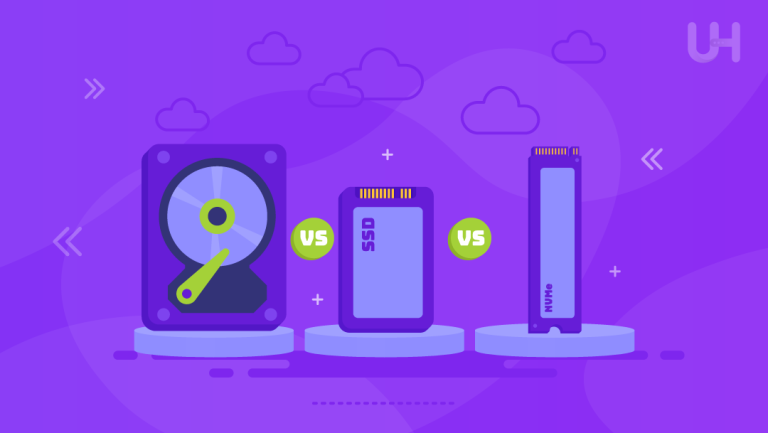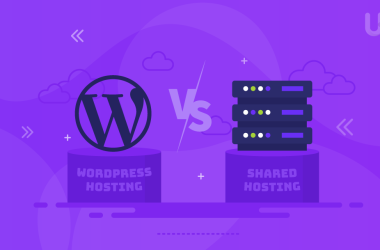Data storage means saving information such as files, programs, and data for later use. Computers store data in two modes: temporary (primary storage), and permanent (secondary storage). A device used for long-term data storage is called a secondary storage device. Unlike the primary storage, which loses data after being powered off, data stored in the secondary stays even when the computer is powered off.
Storage devices give primary and secondary space to the users, meaning they store enormous amounts of data securely and then retrieve access when they need it. Some of the examples may be hard drives, USB drives, and also cloud storage. Secondary storage devices in computers are essential in modern computing as it stores permanent large quantities of data. This helps manage and organize files, programs, and backups with efficiency.
Primary vs Secondary Storage Devices
Primary storage temporarily gives quick access to data the CPU requires immediately to execute programs. Secondary storage, however, permanently holds data even if the computer has been powered off. The former is much faster, but its capacity is very limited. The latter is slower but provides more space for large files and applications.
Examples of common primary storage devices include RAM (Random Access Memory) and Cache. RAM stores data that the CPU processes in real-time. Thus, the computer works much faster. A cache is a holding area that stores data accessed frequently by the CPU for retrieval. Typically much faster than RAM; thus performance is greatly improved in repetitive tasks.
This primary storage is volatile which means all the data is stored in RAM. The cache gets lost whenever the computer is powered down. Secondary storage is non-volatile which means data gets stored permanently; files, applications, and system data are saved and retrieved as well, after a shutdown.
Why Do We Need Secondary Storage?
Secondary storage is crucial in that it ensures data protection persistently. Generally, with secondary storage, large files, programs, and backups can be stored that primary storage cannot. Indeed, if there were no secondary storage, the computer would lose all its data when powered off, and its hardware and software would fail to meet other larger, long-term needs like operating systems, multimedia, and applications.
Role of Secondary Storage System Performance
Primary storage allows data and instructions needed immediately to enable an easy operation of the CPU. Secondary storage stores huge amounts of data. Unlike standard VPS hosting that primarily allocates resources like CPU, RAM and storage space for computing tasks and applications, Storage VPS places a significant emphasis on providing ample storage capacity.
Take Your Business to the Next Level with Storage VPS
Ready to enhance your business’s data storage capabilities with reliable, scalable, and secure solutions? Don’t wait any longer! Discover the benefits of Storage VPS and find the perfect plan tailored to you
Comparison
Here’s the comparison between primary and secondary storage in tabular form:
| Aspect | Primary Storage | Secondary Storage |
|---|---|---|
| Definition | Slower than primary storage but offers a much larger storage capacity. | Permanent storage that holds data long-term for future use. |
| Examples | RAM (Random Access Memory), Cache | Hard Drives (HDD), Solid-State Drives (SSD), USB Drives, Cloud Storage |
| Volatility | Volatile: Data is lost when the computer is powered off. | Non-volatile: Data remains even when the computer is turned off. |
| Speed | Very fast, provides quick access to data needed for current tasks. | Slower than primary storage but offers much larger storage capacity. |
| Capacity | Limited storage capacity, usually measured in gigabytes (GB). | Large storage capacity, often measured in terabytes (TB). |
| Purpose | Used to temporarily store data for processing and running programs. | Used to store data long-term, including files, applications, and backups. |
| Role in System Performance | Provides fast data access for active processes, improving system speed. | Stores larger, less frequently accessed data, freeing up primary storage for performance. |
| Data Retention | Data is lost when power is turned off. | Data is retained permanently, even after shutdown. |
| Cost per Unit Storage | More expensive per GB due to higher speed and performance. | Cheaper per GB, ideal for storing large volumes of data. |
| Usage | Used mainly for active processes, running software, and task execution. | Used for storing operating systems, applications, personal files, and backups. |
This table provides a clear comparison of primary and secondary storage across key aspects.
Types of Secondary Storage Devices
Let’s discuss the types of secondary storage devices based on technology and form factors.
Magnetic Storage Devices
Magnetic storage devices are those data storage media using a magnetic field to read, write, and store digital information. Most of these devices involve magnetic materials, disks, or tape coated with a magnetic substance. The data is stored within the form of magnetic patterns created through the alteration of orientation of the magnetic material.
- Hard Disk Drives (HDD): HDDs are employed in personal computers, servers, as well as external storage devices
- Magnetic Tapes: Magnetic tapes are mainly used for large-scale data backup and archival storage purposes in data centers.
How They Work

Data are stored using magnetic fields on a disk or tape coated with a magnetic material. Magnetic storage devices work by having a read/write head move across the surface of an HDD to read or write data by changing the magnetic orientation of tiny areas on the disk. Data on magnetic tapes are written in similar technology but along the tape, which makes it slower but cost-effective for large amounts of data.
Key Features
- Capacity: Magnetic storage devices support large sizes in terms of capacity. HDD is a few TB in size and magnetic tapes can be even more extensive, typically applied in backup.
- Durability: HDDs are relatively durable but consist of moving parts and may easily get worn out with time. Magnetic tapes are much more durable when it comes to long-term archival storage.
- Cost: Magnetic storage is generally less expensive than SSDs. Therefore more economical for large-capacity storage requirements, especially for long-term data archiving.
Use Cases
HDDs are the preferred technologies in personal computers because they need to hold large amounts of operating systems, programs, and files. They are also the leading technology in servers and data centers, as they need to store and retrieve massive sizes of data. Magnetic tapes are mainly used in enterprise environments for backup systems, archival storage, and backup in disaster recovery due to their high capacity and low cost. Secure access protocols, such as Secure Shell (SSH) with SSH VPS Hosting for remote access and SSL/TLS for encrypted data transfer, ensure that only authorized personnel can access and manage data securely.
Evolution of Magnetic Storage
Magnetic storage technology has evolved considerably, and HDDs have become faster with higher capacities. Technological advancements like perpendicular recording, helium-filled drives, etc. have enabled the aspect of increasing its capacity. Similarly, magnetic tape technology has improved to handle higher-density data and longevity, providing an efficient tool for archiving masses of information. Magnetic storage remains an important player in the data storage business such as large-scale and cost-sensitive applications.
Optical Storage Devices
Optical storage devices store data in the form of discs on which lasers read and write information. Examples of optical storage devices include:
- Compact Disc (CD): Can normally hold about 700 MB of data, and is generally used for music and tiny programs.
- Digital Versatile Disc (DVD): Offers more space than CDs and can be anything from 4.7 GB in single-layer formats up to 8.5 GB in dual-layer formats. DVDs are popular mainly for use with movies and large programs.
- Blu-ray Disc: These discs aim at high-definition video and data. Single-layer designs can offer up to 25 GB of capacity, while dual-layer designs deliver as much as 50 GB. This allows for mass HD movies and large data backups.
How They Work
Optical storage units function by way of laser beams: they are used in reading and writing data. When data is written onto a disc, the surface is modified through a laser to create tiny pits and lands. When a disc is being read, the laser beam bounces off the surface. The optical drive decodes the reflections as digital information. Users are therefore able to access stored data, like music, videos, and software.
Applications and Benefits
Optical media are light in weight and also lightweight to handle. They are mainly used for:
- Media Distribution: CDs, DVDs, and Blu-ray discs are the common ones used for music, movies, and software.
- Long-Term Storage: Optical media can hold data for long periods without a power supply; hence they can be very helpful in archiving a lot of important files, documents, and photos.
- Durability: They are less vulnerable to magnetic interference compared to a hard drive.
Decline in Popularity
Even though optical storage devices have several advantages, they are losing their market popularity because digital downloads and storage are gaining traction in the market. Consumers now prefer directly accessing data through the internet rather than through physical media. However, this method is used in niche areas, such as software distribution and multimedia archiving.
Preservation of Data in Archival Storage
The key role of optical media devices in storage is the very long time to archive and does not change. CDs, DVDs, and Blu-ray discs can survive for thousands of years-thousands indeed-as long as they are kept well. Optical discs are frequently used by organizations to make a backup and archive their records in case something needs to be recovered for future reference or audit.
Solid-State Storage Devices (SSD)
Solid-State Storage Devices, often called SSDs are a data storage technology that uses flash memory to store and access data. While not like traditional hard disk drives, HDDs, and CDs don’t have moving parts. They are faster, more durable, and energy-efficient as well. Moreover, makes it the best storage type for your web server.
Key Features
- Speed: SS appears faster in data access and transfer speeds than in HDDs. This develops quicker boot times, and faster time for application loading, and improves the total system performance.
- Durability: They are more shock- and vibration-resistant since it does not have any mechanical components, making them an ideal substitute for portable devices and for installations in which reliability is important
- Energy Efficiency: They use fewer watts of power than HDDs, making them great for use in laptops and other mobile devices to extend the battery life.
How They Work
The SSD stores data on flash memory chips that use NAND (Negated AND) technology. This type of technology writes and reads way faster than any form of traditional magnetic storage. When the data is saved, it changes the state of the memory cells through electrical charges, hence when the data has to be accessed, it comes almost instantaneously.
Use Cases and Benefits
- Personal Computers and Laptops: The usage of SSDs in personal computers and laptops is rapidly increasing to enhance speed and performance.
- Servers and Data Centers: Many organizations are using SSDs in their servers to improve the access data speed of applications as well as databases.
- Gaming Consoles: This enables quicker game loading, and this in turn enhances the gaming experience.
- Mobile Devices: Due to its compact size and lower power draw, it is ideal for use in smartphones and tablets.
Evolution and Trends
Many improvements related to SSD technology have led to higher capacities lower prices in solid-state drives and improved access to the intended consumers. More recent developments include devices such as NVMe storage, or Non-Volatile Memory Express, which further increases speed and efficiency in SSDs more than what was achieved through older SATA connections. You can experience blazing-fast speeds of NVMe SSDs through NVMe VPS solutions for unrivalled performance.
Cloud Storage
Cloud storage is a data storage model that allows the saving of files and data on remote servers accessed via the Internet. It is a feature offered by cloud computing companies, which permits users to store, manage, and access their data from anywhere with an internet connection.
Key Features
- Accessibility: Since cloud storage allows users to access their files from any device connected to the internet, whether a smartphone, tablet, laptop, or desktop computer, accessibility is guaranteed.
- Scalability: Users can have easy scalability of storage needs up or down, only being charged for the amount used. Such fluidity will be very ideal for both the individual and the business at times when changes in storage needs are imminent.
- Automatic Backups: Many cloud storage services offer automatic backup features so that data will be saved at regular intervals without any intervention.
- Collaboration: With cloud storage, multiple users can access and work on the documents in real time, very useful for teamwork and project management.
How It Works

Cloud storage involves the storage of data on remote servers managed by cloud security service providers. Users upload their files to the servers through the internet connection. Their data is encrypted for proper storage. Access to the files is then retrieved through the internet connection, log-in to the cloud account, and they can download or edit files.
Use Cases and Advantages
- Personal Use: With cloud storage, people can store their personal files, photos, and videos for access whenever needed from any device.
- Business Applications: Cloud storage allows organizations to use the solution for sharing files, project collaboration, and data backup, which results in more productivity and efficiency.
- Disaster Recovery: Cloud storage provides an excellent disaster recovery solution when there is hardware failure, a natural disaster, or a cyber attack.
Best Cloud Storage Services
Some of the most popular cloud storage include:
- Google Drive: User-friendly interface and integrative capabilities with Google Workspace applications.
- Dropbox: With simplicity and efficient file-sharing capabilities.
- Microsoft OneDrive: For its integration capabilities with Microsoft applications. It is very popular for business purposes.
- Amazon S3: This is a scalable storage service that has been widely adopted by developers and enterprises for storing large chunks of data or performing data backups.
Security and Privacy Considerations
Although the solution of cloud storage is convenient to users, security and privacy issues arise with it. A reputed cloud service provider should thus be chosen in terms of robust encryption and security measures. Users should also employ strong passwords and two-factor authentication to secure their accounts.
Future of Cloud Storage
The future of cloud storage looks bright as technology advances, improving speed, security, and efficiency. More companies and people rely on digital data; thus, data management and accessibility will increasingly depend on cloud storage. Such trends like edge computing and hybrid solutions are going to redefine the cloud storage environment by making it even more important in daily operations and private data management.
Upgrade to a Dedicated Storage Server Today
Discover the advantages of dedicated storage servers and find the perfect solution for your business at Ultahost Dedicated Storage Server. Elevate your data management and secure your business’s future with Ultahost.
Hybrid Storage
Hybrid storage solutions integrate different kinds of storage technologies, both on-premises and in the cloud. All types are aimed to offer enhanced performance, capacity, and cost flexibility. In most hybrid storage solutions, traditional on-premises storage disk drives, solid-state drives-as well, and cloud-based services are implemented. Its goal is to utilize the power points from both kinds of storage to provide a highly flexible and efficient data management environment.
Key Features
- Flexibility: Hybrid storage solutions enable organizations to store data exactly where it should be stored. They find the right balance between premises and cloud storage depending on performance and cost considerations.
- Cost Efficiency: The use of mixed storage types reduces the overall storage cost. Frequented data is left in local storage, allowing for quicker access while less critical data is then outsourced to the cloud.
- Scalability: Hybrid solutions enable the scaling of storage needs for organizations in a rather simple way. They could either upsize local storage capacity or enlarge cloud storage as necessary, without significant changes to the infrastructure.
- Data Tiering: This automatically classifies data to be moved between local and cloud storage according to access frequency to optimize performance and cost.
How It Works
Hybrid storage solutions are usually equipped with a control plane monitoring allocations of data between all storage types. Access-intensive data is kept local on the SSDs so it’s instantly available when called. Less critical or archived data is handed over to cloud-based storage, though. Data will be able to move effortlessly across the environments according to varying usage patterns to ensure efficient use of the related resources.
Use Cases and Benefits
- Business Applications: Hybrid storage is the most versatile form of storage support for diverse workloads, for example, databases, virtual machines, file storage, etc. In this respect, it holds great promise for delivering better performance at lower cost.
- Backup and Disaster Recovery: Another advantage of hybrid solutions is that they provide strong backup and disaster recovery configurations. Critical data will be stored onsite to recover quickly if needed. Secondary backups will be sent to the cloud for added redundancy.
- Data Security: Certain datasets may be stored on-premise in strict accordance with regulatory requirements, whereas less sensitive data can be kept in the cloud. This ensures the requirement for security does not conflict with access.
Popular Hybrid Storage Solutions
Hybrid storage solutions are provided by several vendors:
- Dell EMC: Solutions that integrate on-premises storage with cloud services, so that information can flow from one to the other.
- NetApp: Offers hybrid cloud storage solutions that combine on-premises storage to give flexibility and efficiency through cloud capabilities.
- Microsoft Azure Stack: Empowers organizations to run Azure services in their local data centers, thereby offering a true hybrid cloud experience.
Challenges and Considerations
Hybrid storage solutions-seeking organizations need to recognize probable challenges among which are:
- Complexity: Using a combination of different storage types is more complex than just handling one storage type, requiring specialized IT professionals to operate.
- Data Security: Providing data security in the hybrid model involves careful planning and robust security measures that exist across both environments.
- Performance Monitoring: Organisations must ensure performance is monitored across multiple storage types to use the data optimally and access it efficiently.
Future of Hybrid Storage Solutions
It will, therefore, ensure that hybrid storage solutions are indeed a bright future since more and more clients will seek flexibility in data storage and greater scalability. As organizations continue to adopt the world of cloud technology, hybrid storage will become a crucial part of IT infrastructure. In the next several years, AI-driven data management and automation will add great value to more intelligent hybrid mechanisms, making it possible for data to be handled better.
Secondary Storage Device: Advantages
- Large storage capacity: They offer far more storage space than the main ones. Users can store much more data using these kinds of devices.
- Persistence: Even after a computer is shut down, data on these devices persists in secondary storage. They do not allow all the important data to get erased.
- Variations of Data Stored: It can store various kinds of data like operating systems, applications, personal files, as well as data backups.
- Better Data Security: Because most of the data are stored in a remote location, secondary storage offers better alternative forms of data security and backup, which give users of these services the means to save necessary files from being lost or damaged.
- Accessibility: Because of the development of cloud storage, people can access data using different devices. It permits its users flexibility in accessing any information via an internet connection.
- Usage Flexibility: Secondary storage supports almost anything, from individual use to corporate and enterprise storage applications, which, in practice, provides usage flexibility.
Common Use Cases for Secondary Storage Devices
Secondary storage devices are very crucial in many applications. These offer one layer of management and security to data.
- Personal and Business Data Backup: Secondary storage devices are widely used for backing up important personal and business data to prevent loss due to hardware failure or accidental deletion.
- Software and Multimedia Storage: They act as the warehouse for software applications, games, photographs, music, and videos and thus provide the user with enough space for large media files.
- Data Recovery Systems: In the absence of them, your data recovery solutions would lack considerable importance as the secondary storage does provide considerable support in restoring lost or corrupted files.
- Enterprise-level databases and data warehouses: Organizations require the use of secondary storage devices to allow for efficient processing and analysis of large amounts of information.
- Secondary Storage in Media Production: Secondary storage is also critical in video editing and music production. It comes in handy while storing high-resolution files and other large project assets.
- Archiving and Legal Document Storage: Secondary storage is used for long-term archiving of documents, including legal files, ensuring that important records are preserved and easily retrievable when needed.
How to Choose the Right Secondary Storage Device
When choosing an external storage device, several considerations influence your choice. Whether it will meet your specific needs.
- Storage Capacity, Speed, Durability, Cost, and Portability: Decide how much data you will want to store, and how fast you will want to access it. And if you need to withstand shock and transport. Then, make sure that it fits into your budget.
- Matching the Device to User Needs: There will be certain requirements for usage of which the kind will be that seen with your device. Hence needs to match right with the kind of usage. For example, gamers will prefer SSDs because they can load files speedily. Whereas large HDDs or cloud storage would be best for business needs, data backup, and business applications. Gaming enthusiasts and professionals rely on NVMe storage for game VPS hosting to minimize stuttering.
- SSD vs Cost Efficiency (HDD): SSDs offer faster speed, whereas HDD is cheap and more efficient for larger storage. You have to decide the necessity of speed or needed space for your application.
- For cloud storage: If you’re planning to use cloud storage, ensure that its privacy policy, encryption over data, and accessibility features make sure that your files are safe and available from any place.
- External Drives vs Internal Storage: External drives are portable and user-friendly, but when it comes to performance and scalability, internal storage wins hands down. Consider which of these can work best for your workflow and how much you may need in the future.
Secondary Storage Devices in Everyday Life
Without the secondary storage devices, daily activities would come to a standstill from the smartphones and tablets into which several applications, photographs, and music are loaded to the smart homes and Internet of Things (IoT) devices that operate with local and cloud storage for seamless performance. In automotive technology, smart cars employ secondary storage in bringing about navigation, infotainment, and onboard data. In addition to such, streaming services such as Netflix and Spotify depend on extremely extensive cloud-based storage solutions to provide on-demand access to digital entertainment, where customers can stream movies, music, and shows from anywhere at any given time. These devices make modern connected living possible.
Conclusion
Secondary storage devices are essential for storing and managing large amounts of data in modern computing. They provide persistent storage, ensuring data is retained even when devices are powered off. With emerging technologies like cloud storage, SSDs, and hybrid solutions, storage options are becoming faster, more secure, and more scalable. As these innovations continue to evolve, it’s important to assess your personal or business storage needs to choose the most effective solution, whether for daily use, backup, or long-term data management.
To ensure your data is stored efficiently and securely, it’s essential to choose the right storage solution. For top-tier performance and reliability, explore Ultahost’s SSD Dedicated Server solution. Visit Ultahost SSD Dedicated Server and take your data management to the next level!
FAQ
What is a secondary storage device?
A secondary storage device stores data long-term and retains it even when the computer is off.
Why are secondary storage devices important?
They provide large storage capacity and ensure data persistence beyond the primary memory’s limitations.
What are the types of secondary storage devices?
Common types include hard disk drives (HDDs), solid-state drives (SSDs), optical discs, and cloud storage.
How do secondary storage devices differ from primary storage?
Secondary storage retains data permanently, while primary storage (RAM) is temporary and volatile.
Which secondary storage device is the best for personal use?
It depends on your needs; SSDs offer speed, while HDDs provide more capacity at a lower cost.
Can I use both primary and secondary storage together?
Yes, computers use both primary and secondary storage to manage data and improve system performance.
What is the role of secondary storage in a computer?
Secondary storage holds operating systems, applications, and files not in active use by the primary memory.














